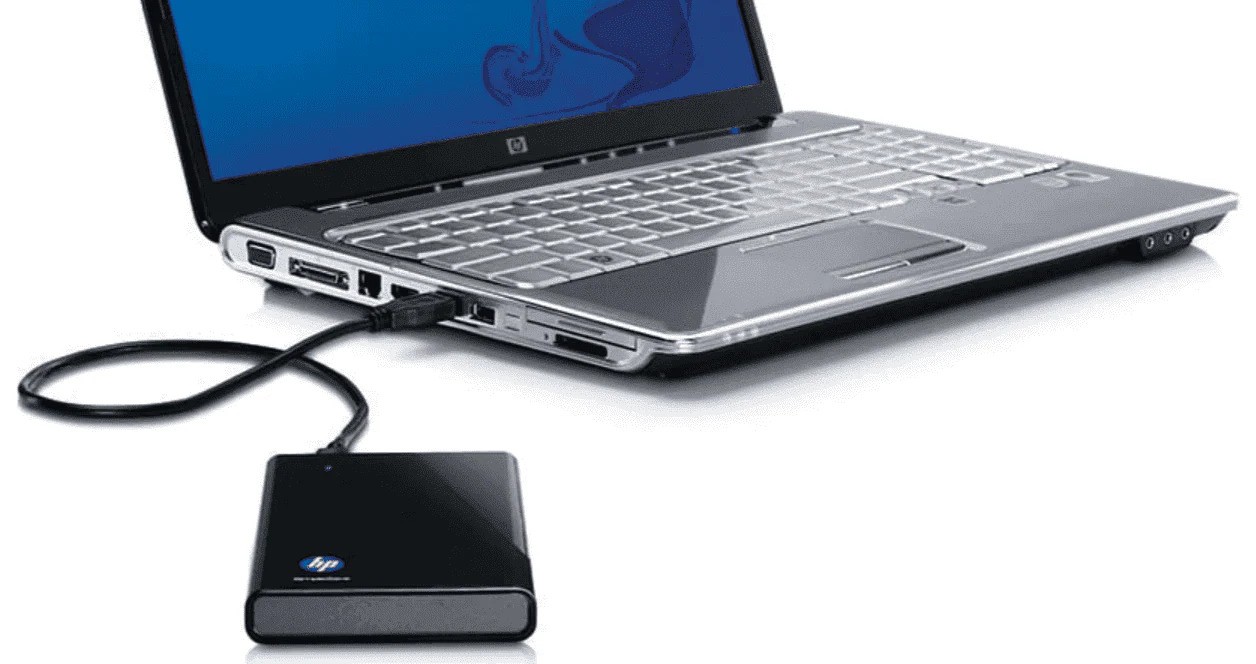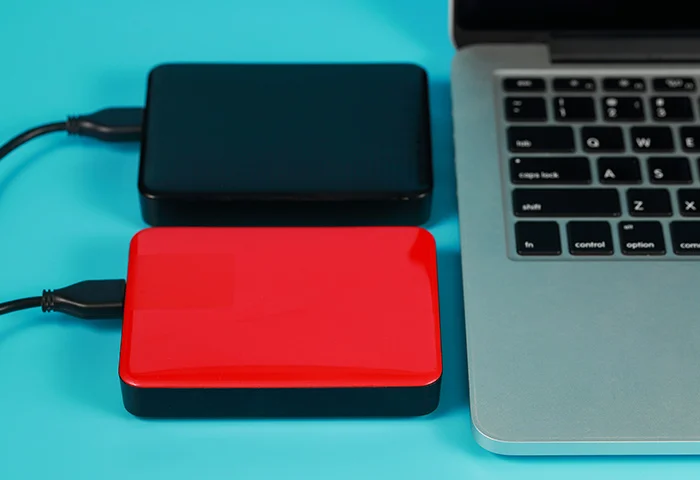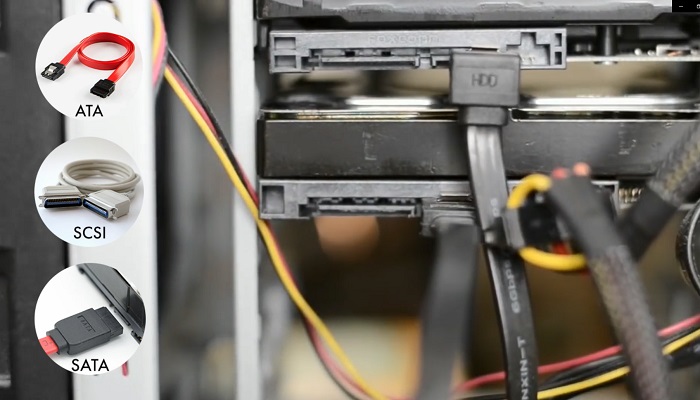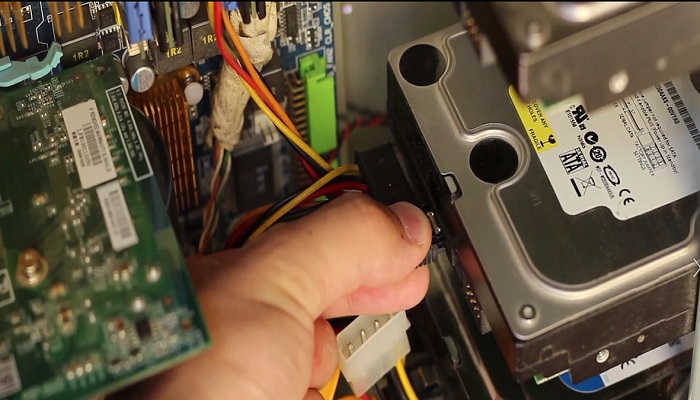How To Clone A Hard Drive On Windows 10/11 In 4 Easy Steps
Learn how to clone a hard drive on Windows 10/11 easily and securely. Upgrade to a new drive without reinstalling Windows.

Feb 21, 2025
Upgrading your hard drive or creating a backup is essential to keeping your data safe and improving system performance. Manually transferring files can be time-consuming and may not include your operating system or installed programs. That’s where hard drive cloning comes in.
Cloning a hard drive ensures that everything, including the OS, applications, and settings is copied exactly as it is. If you’re upgrading to an SSD, replacing a failing drive, or simply creating a backup, this guide will walk you through how to clone a hard drive on Windows 10/11 step by step.
What Is Hard Drive Cloning?
Hard drive cloning is the process of creating an exact copy of one drive onto another. Unlike copying and pasting files, cloning replicates everything, including:
- The operating system (Windows 10/11)
- Installed software and settings
- Boot sectors and partitions
Why Clone A Hard Drive In Windows 10/11?
Cloning a hard drive is a practical solution for various situations, from upgrading your system to ensuring data security. Below are the key reasons why cloning is beneficial, along with detailed explanations for each.
1. Upgrading To A Faster Drive
If your computer is running on an older HDD (Hard Disk Drive) and you want to boost its performance, switching to an SSD (Solid State Drive) is the best option. SSDs are significantly faster, offering:
- Faster boot times:Windows loads in seconds instead of minutes.
- Improved application speed:Programs launch quickly with minimal lag.
- Better overall system performance:The computer responds instantly to tasks.
Instead of reinstalling Windows and manually transferring files, cloning your HDD to an SSD ensures that all your settings, programs, and files remain intact. This saves time and prevents the hassle of reconfiguring everything from scratch.
2. Replacing A Failing Drive
Hard drives have a limited lifespan, and over time, they can develop bad sectors, leading to slow performance, crashes, or total failure. Sometimes, these issues start with smaller signs, like an external hard drive not showing up, which can indicate deeper storage problems that need immediate attention. Signs of a failing hard drive include:
- Frequent system crashes or freezes
- Slow boot times and application loading
- Unusual noises, such as clicking or grinding sounds
- Frequent file corruption or missing files
If you notice any of these symptoms, cloning your drive immediately can help prevent data loss. By transferring your entire system to a new hard drive, you can seamlessly continue working without reinstalling Windows or losing important files.
3. Creating A Full Backup
While traditional backup methods (such as cloud storage or external hard drives) are useful, they often only save selected files and folders. Cloning a hard drive, on the other hand, creates an exact copy of your system, including:
- Windows OS and settings
- Installed applications
- User data, files, and preferences
This means if your system crashes or experiences a critical failure, you can immediately swap in the cloned drive and continue working without downtime. Cloning is especially valuable for businesses and professionals who need quick recovery solutions.
4. Deploying Multiple Systems Efficiently
For IT professionals managing multiple computers in offices, schools, or businesses, manually installing the same software, settings, and configurations on every machine is time-consuming. Instead, they use disk cloning to:
- Set up one computer with the desired configuration.
- Clone that system onto multiple other machines.
- Ensure consistency across all computers.
5. Setting Up A New Computer
If you’re upgrading to a new PC, cloning your old hard drive can make the transition smoother. Instead of manually reinstalling all your programs and transferring your files, you can simply clone your old drive to the new computer, ensuring all your familiar settings and data are right where you expect them to be. However, after setting up your new system, you might encounter issues like a second monitor not detected on Windows 10/11, which often requires adjusting display settings or updating drivers.
How To Clone A Hard Drive On Windows 10/11
Step 1: Prepare Your New Drive
Before you start the cloning process, you must connect and set up your new drive properly.
Connect The New Drive
The method of connection depends on your computer type. If you are using a desktop, open the case and connect the new hard drive to an available SATA port on the motherboard. Then, attach a power cable from the power supply unit.
If you are using a laptop, you will need a USB-to-SATA adapter or an external hard drive enclosure to connect the new drive. Once connected, turn on your computer and check if the system detects the new drive.
Initialize The New Drive (If Required)
If the new drive is brand new, it may not be recognized immediately by Windows. You will need to initialize it using Disk Management. Right-click the Start Menu and select Disk Management. If the new disk appears as “Unallocated,” right-click it and choose “Initialize Disk.”
You will then be prompted to select a partition style. Choose MBR (Master Boot Record) for older BIOS-based systems or GPT (GUID Partition Table) for modern UEFI-based systems. Click OK to complete the initialization. If necessary, create a new partition to make the drive ready for cloning.
Step 2: Choose A Cloning Software
Windows 10 and 11 do not have a built-in cloning tool, so you need to use third-party software. Some of the most reliable options include Macrium Reflect, EaseUS Todo Backup, AOMEI Backupper, and Clonezilla. Macrium Reflect and EaseUS Todo Backup offer both free and paid versions with user-friendly interfaces.
AOMEI Backupper provides flexible cloning options, including sector-by-sector cloning, while Clonezilla is a free, advanced tool that requires command-line knowledge. Download and install the software of your choice before proceeding.
Step 3: Start The Cloning Process
After installing the cloning software, open it and select the disk cloning feature. Different programs may label this feature as "Clone Disk," "Disk Copy," or "Migrate OS." Once inside the cloning tool, select your current hard drive as the source. This is the drive that contains Windows, applications, and personal files. Then, select the new drive as the destination where the data will be transferred.
Some cloning software allows you to adjust partition sizes before starting the cloning process. If the new drive has a larger storage capacity, you can choose to expand the partitions to make use of the extra space. Alternatively, you can keep the original partition structure unchanged or manually resize partitions to fit your needs.
Once everything is set up, start the cloning process. The time it takes depends on the size of your data and the speed of your drives. SSDs are much faster than traditional hard drives, so the process will be quicker if you are upgrading to an SSD. During cloning, avoid turning off your computer or disconnecting any drives, as this could cause data corruption.
Step 4: Set The New Drive As The Boot Drive
Once the cloning process is complete, you need to configure your system to boot from the new drive. Restart your computer and enter the BIOS/UEFI settings by pressing a specific key during startup, such as F2, F12, ESC, or DEL. The exact key depends on your computer manufacturer.
Inside the BIOS settings, locate the Boot Order or Boot Priority section. Find the newly cloned drive and move it to the top of the boot order. Save the changes and exit the BIOS. Your computer will now attempt to boot from the new drive instead of the old one.
After restarting, check if the new drive is functioning correctly. Open File Explorer and confirm that the new drive is labeled as C:. Verify that all files, applications, and system settings are intact. If everything is working properly, you can choose to keep the old drive as a backup or format it to use as additional storage.
Best Hard Drive Cloning Software For Windows 10/11
Several free and paid tools can help with cloning. Here are some of the best options:
1. Macrium Reflect (Free & Paid)
- Fast and reliable cloning
- Supports incremental backups
- Free version available
2. EaseUS Todo Backup (Free & Paid)
- User-friendly interface
- Allows cloning to smaller SSDs
- One-click disk cloning
3. Clonezilla (Free, Open Source)
- Lightweight and powerful
- Works with multiple operating systems
- Command-line interface (not beginner-friendly)
4. AOMEI Backupper (Free & Paid)
- Simple UI, great for beginners
- Sector-by-sector cloning
- Supports bootable USB cloning
5. MiniTool ShadowMaker (Free & Paid)
- Offers automatic scheduled cloning
- Compatible with Windows 10/11
- Includes data recovery features
Things To Consider Before Cloning A Hard Drive
1. Check Storage Space
One of the most critical aspects to check before cloning is the storage capacity of the new drive. The destination drive must have enough space to accommodate all the data from the source drive. If the new drive has a smaller capacity, you may need to reduce the size of partitions before cloning. This can be done using Disk Management or the cloning software itself.
If your current drive is only partially filled, some cloning software can automatically adjust the partition sizes to fit the new drive. However, if the target drive is significantly smaller, manually deleting unnecessary files or moving them to an external drive beforehand can help avoid issues during cloning.
2. Backup Important Files
Although cloning is a relatively safe process, unexpected errors such as power failures, software crashes, or compatibility issues can occur. To safeguard against data loss, it’s highly recommended to back up critical files before proceeding.
You can create a backup by copying essential files to an external drive, cloud storage, or using Windows' built-in Backup and Restore tool. Some cloning software also offers an option to create a disk image, which serves as a full backup of your drive. Having a backup ensures that even if something goes wrong during cloning, you won’t lose important data.
3. Check Partition Style (MBR Vs. GPT)
Windows hard drives use two partition styles: MBR (Master Boot Record) and GPT (GUID Partition Table). These partition types determine how data is structured on the drive and how the system boots. Using the wrong partition style on the cloned drive may result in boot failures.
To check your current drive’s partition style, follow these steps:
- Right-click the Start button and select Disk Management.
- Locate your primary drive in the list of disks.
- Right-click the drive and choose Properties.
- Navigate to the Volumes tab and check the Partition Style field.
If your computer uses Legacy BIOS, you need to use MBR. If it uses UEFI, you should use GPT. The new drive should match the partition style of the existing drive unless you plan to change your boot settings. Some cloning tools allow you to convert MBR to GPT or vice versa during the cloning process, but this should only be done if necessary.
4. Use The Right Cloning Software
Since Windows 10 and 11 do not have a built-in disk cloning tool, you must use third-party software for the process. Choosing the right software depends on your technical expertise and specific requirements.
Popular cloning software includes:
- Macrium Reflect:A user-friendly option with free and paid versions, offering reliable disk cloning and imaging features.
- EaseUS Todo Backup:Provides a simple cloning interface and additional backup features.
- AOMEI Backupper:Offers flexible cloning options, including system migration and partition resizing.
- Clonezilla:A powerful open-source tool suited for advanced users who prefer command-line controls.
Selecting a reliable cloning softwareensures a seamless process without data corruption or boot errors. Some software also offers advanced features such as sector-by-sector cloning, allowing you to create an exact copy of your hard drive.
FAQs
Does Cloning A Hard Drive Copy The OS?
Yes, cloning a hard drive copies everything, including the operating system, system files, installed programs, and personal data. The cloned drive will function exactly like the original without needing to reinstall Windows.
What Is The Fastest Way To Clone A Hard Drive?
The fastest way to clone a hard drive is to use a high-speed SSD as the destination, connect it via SATA or NVMe rather than USB, and choose efficient cloning software like Macrium Reflect or AOMEI Backupper. Ensuring minimal background activity during cloning can also speed up the process.
Does Windows 10 Have A Cloning Tool?
No, Windows 10 does not have a built-in cloning tool. You will need third-party software such as Macrium Reflect, EaseUS Todo Backup, or Clonezilla to clone a hard drive.
How Long Does It Take To Clone A Hard Drive?
The time depends on the size of the drives, the speed of the drives and connections, and the cloning software used. It can take anywhere from minutes to hours.
What Do I Do With My Old Hard Drive After Cloning?
You can keep it as a backup, repurpose it for other storage, or securely wipe it and recycle it.
Final Thoughts
Cloning a hard drive is a powerful technique for upgrading storage, creating backups, and migrating systems. By carefully following the steps outlined in this guide and paying close attention to the details, you can successfully clone your hard drive and enjoy the benefits of a faster, larger, or backed-up system.
Remember to always back up your data before cloning, and choose reputable cloning software for the best results. With the right preparation and tools, hard drive cloning can be a straightforward and efficient process.


